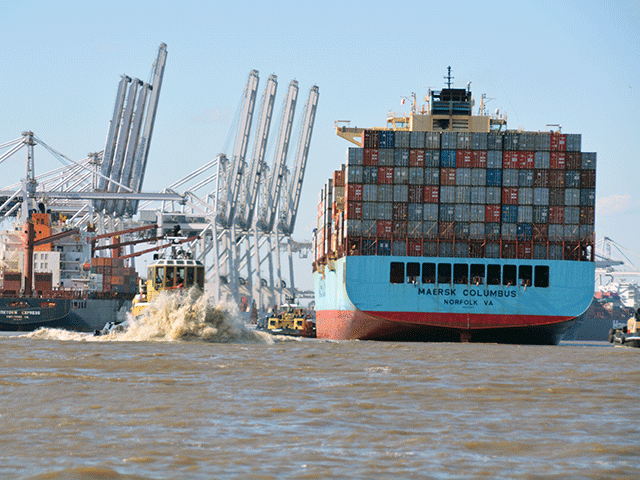OMAHA (DTN) — Despite concerns from export-dependent industries such as agriculture, the Trump administration on Thursday moved ahead with a plan to charge fees to Chinese ships.
A container ship docking at the Port of Savannah, Ga., in 2020. The Trump administration is set to charge $50 a ton docking fees on Chinese companies and other foreign shipping companies using Chinese-built ships. The U.S. Trade Representative’s Office ruled China had targeted the maritime industry, harming U.S. ship manufacturing. (DTN file photo by Chris Clayton)
The fees will apply to Chinese ships for each voyage to the United States, not for each port of call.
The U.S. Trade Representative’s Office concluded Thursday that the fees were needed because China had targeted the maritime industry, harming U.S. ship manufacturing and U.S.-based maritime companies.
China controls nearly one-fifth of the world’s shipping containers, USTR noted, and the country has expanded its control over global ship manufacturing and logistics.
Initially, USTR had proposed a $1.5 million flat fee for every port of call for Chinese ships. The new plan released Thursday doesn’t specify what the maximum fee would be on a ship, just the per-ton fees.
The fees come as the Trump administration has already set tariffs on imported Chinese goods at 145%, and the president has proposed going to 245%.
Farm groups had called on USTR to exempt the industry from the fees. USTR noted in its order that agriculture and other industries had requested exemptions in their comments to the agency. However, the order did not indicate any exemptions would be granted.
After a 180-day no-fee timeframe, ships based out of China will be charged up to $50 per ton starting Oct. 24, 2025. The tonnage fee would then increase $30 a ton on April 17, 2026, and increase $30 a ton the next two years, reaching $140 a ton.
Companies not based in China but using Chinese-built ships will be charged $18 per ton, or $120 per container, whichever is higher.
Typically, container ships arriving at West Coast ports will hold anywhere from 12,000 to 24,000 containers. Container ships generally hold 100,000 to 200,000 tons. Ports such as Long Beach, California, for instance, will move about 9 million tons of goods a year, of which roughly half are imports.
A ship can be charged the port tonnage fee up to five times per year, the order stated.
###
DTN


